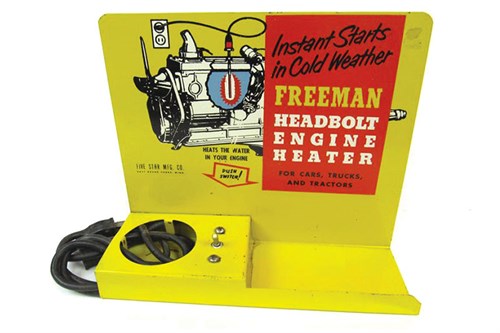Cold Engine Starts in Classic Cars - Mick's Tips of the Trade



|
Give your old toy a chance to warm up in winter, says Mick McCubbin
Do you drive your old classic to work? If so, this time of year – particularly if you live down south – you need to be a bit patient. While your modern car can live with being started and driven off (gently) more or less instantly, the old girl won’t cope so well. So get up a few minutes earlier.
That’s because the technology is very different. Old engines run bigger clearances, different lubricants and just need more patience. Even the fuel systems are different and need time.
Since we’re at the top of the motor, let’s talk about that. In a cold engine, what tends to happen is the fuel gets vaporised through the carburettor but can condense again as it hits the cold metal in the inlet tract. So the engine, which is already running rich at this stage isn’t going to be happy and there will be a tendency to foul plugs unless you give it a chance to get up to temp, before you make demands.
The same thing applies to very early fuel injected cars out of the sixties and seventies – they need time to get up to speed.
And, with all of the above, once you start you need to let the engine get some temperature before you shut it down again. So no firing it up just to move it out of your way and switch it off. Again, it fouls the plugs and, in extreme cases, you’ll end up with a non-starter.

Letting it warm up is also critical for the depths of the engine – crankshaft, pistons, cams and so on. Older designs run the previously mentioned big clearances, so the oil and the components need both heat and time. Remember oil isn’t just there to lubricate: it’s there to effectively take the ‘knock’ out of an engine by taking up clearances, assist in temperature control and lubricate. Which is why a modern car oil in an old engine (and vice-versa) is often a bad idea.
That extends all the way back to the gearbox in some cars. We’ve come across models where the synchro won’t willingly co-operate until you’ve got some heat back there too.
How long should you warm it up for? You don’t have to sit around till lunch time but a few minutes is a good start. As a rule of thumb, if you can get if off the choke and have a reliable idle, you’re about right to go. Even then, you need to be gentle for the first few miles until you see the temp gauge swing into its normal range.
It might seem like a nuisance, but you can walk back into the house and finish your cup of tea while the old girl gets up to speed. Think of all the money you’ll be saving by not rushing into things, fouling the plugs, and prematurely wearing out your engine!
Mick owns Glenlyon Motors, an expert workshop and car storage facility in Brunswick, Melbourne. Call him on (03) 9380 5082.
Unique Cars magazine Value Guides
Sell your car for free right here
Get your monthly fix of news, reviews and stories on the greatest cars and minds in the automotive world.
Subscribe

.jpg)












